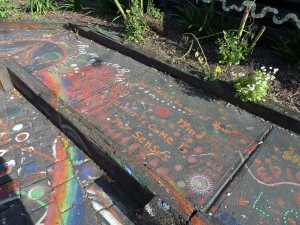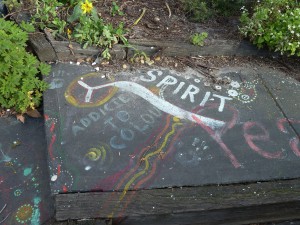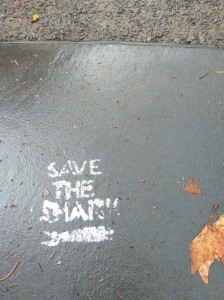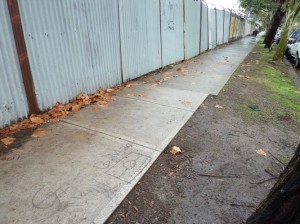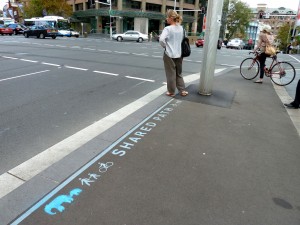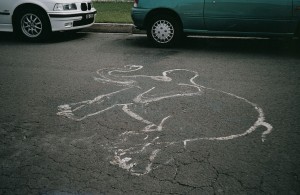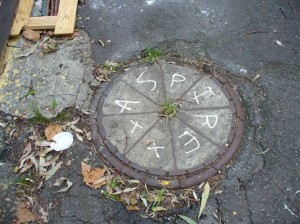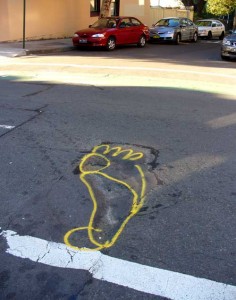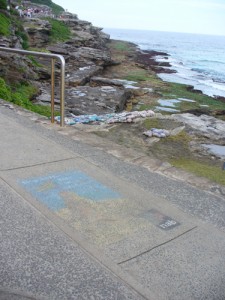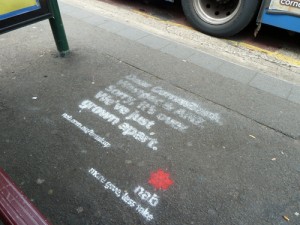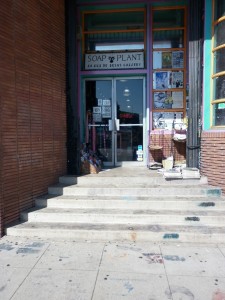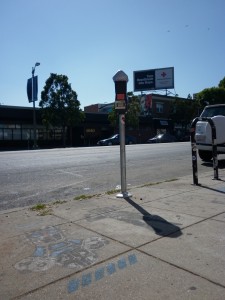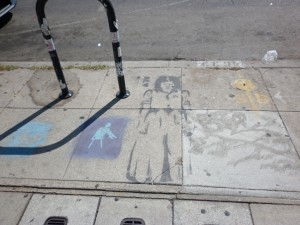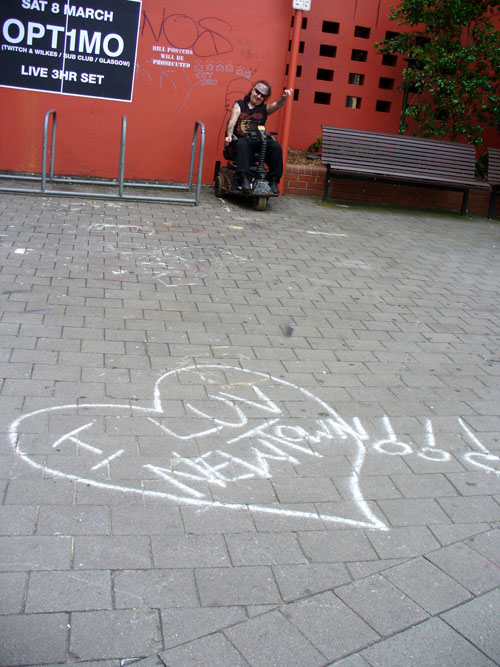
'I have a dream' Square, King Street, Newtown, 2008
A while ago I came across this description:
King Street, Newtown is always more or less busy, but on Saturday night it is seen at its best and brightest. Fancy a double line, more than a mile long, of brilliantly lighted shops; and “side-walks†so inconveniently crowded that it is often a matter of some difficulty to push one’s way through the throng of people on business and on pleasure bent.
The description seems fairly accurate to me, although it does not mention the vehicles that crawl up and down King Street on a Saturday night while their occupants ogle the crowds on the footpath. But that would be because this passage comes from an article in the June 1889 issue of the Sydney Illustrated News. King Street has been a commercial success for more than 150 years while the demographics of Newtown have ebbed and flowed.
Readers of this blog will have noticed that many of the pavement graffiti examples that I mention were photographed in Newtown. There are two main reasons for this – I live close by; and Newtown is a hub of graffiti activity. In fact, it was small esoteric stencils on the footpaths of Newtown that sparked my interest and prompted me to start my collection of pavement graffiti photographs in 1999.

Stencil publicising The Blair Witch Project movie, King Street, Newtown, 1999
Newtown was incorporated as a municipality in 1862. Cast iron roof-water outlets set into the kerb In King Street still bear the letters NMC, even though Newtown Municipal Council ceased to exist in 1949. These days part of Newtown is included in the City of Sydney, while the remainder falls within the Marrickville local government area.
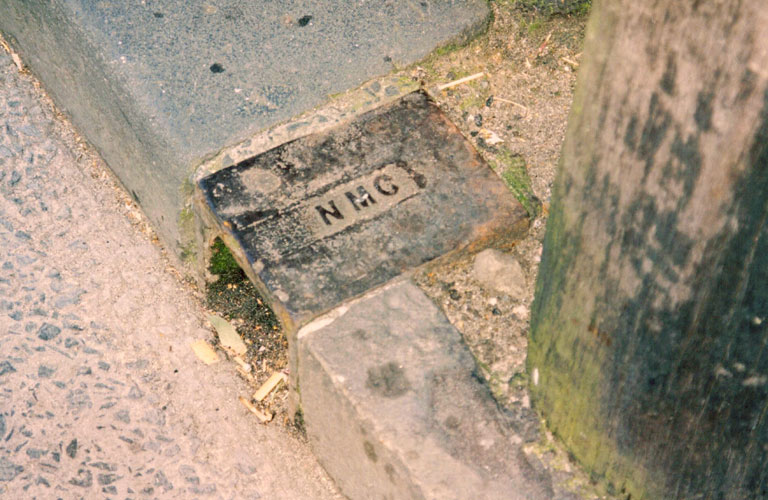
Roof water outlet to gutter with embossed letters ‘NMC’, King Street, Newtown, 1999
I have discovered that this kind of information and much more is available on the Newtown Project website, which has been created by the City of Sydney Archives and various volunteers to bring together historical information about the Municipality of Newtown. The information ranges from Council Minutes to the history of the street-art group Unmitigated Audacity, whose works included the I Have a Dream mural. There is a self-guided walking tour and plus lots of early photos of Newtown streets, buildings and people – and contemporary photos as well. Definitely worth a look.
